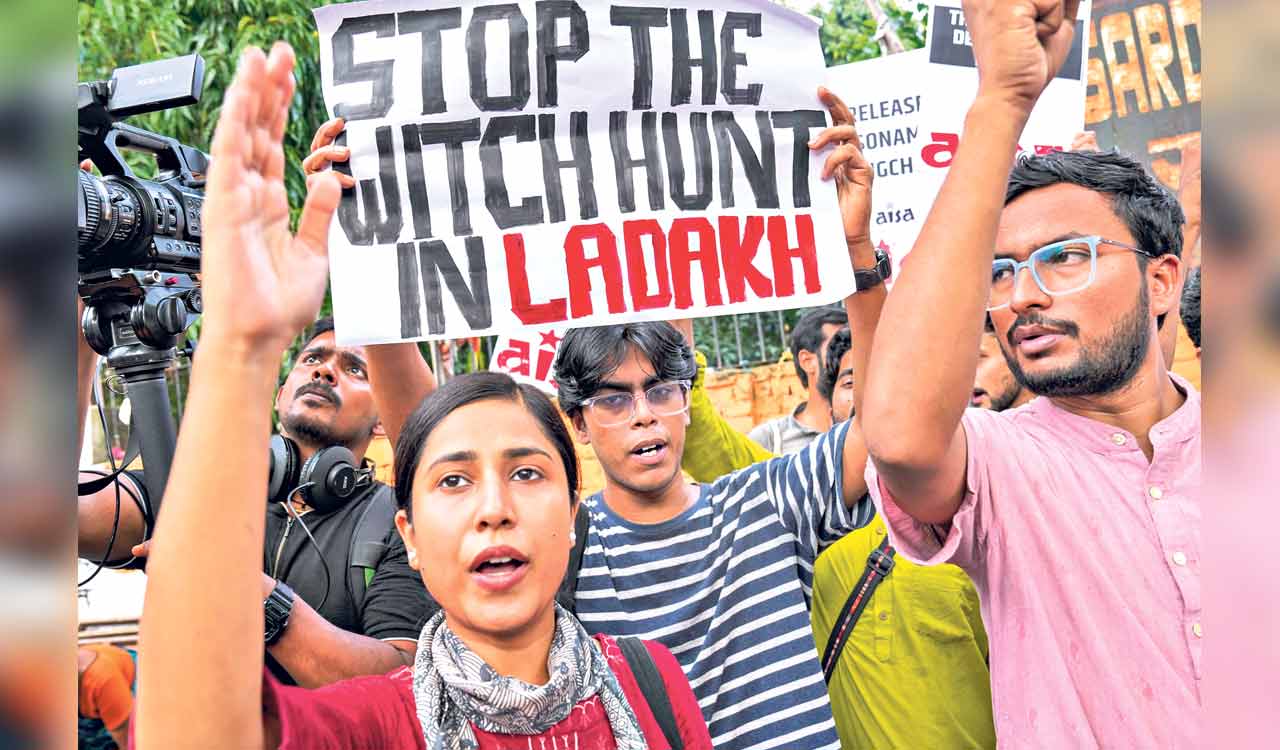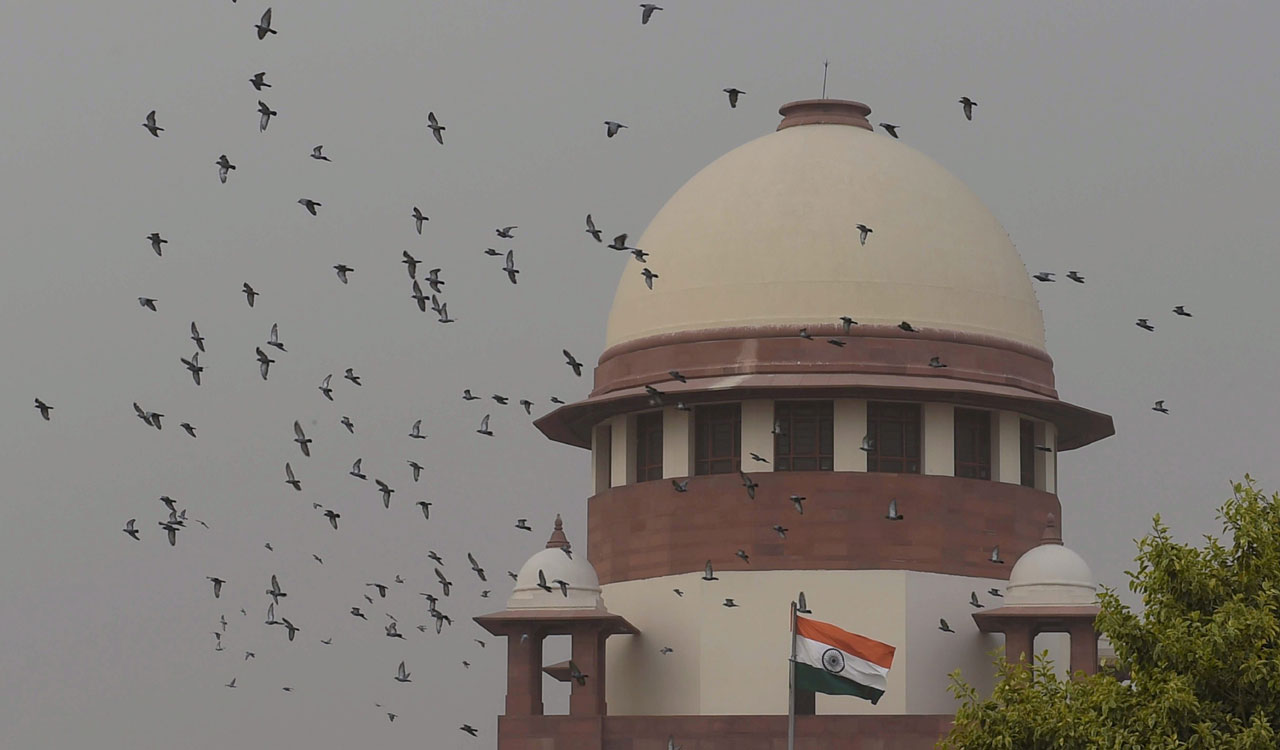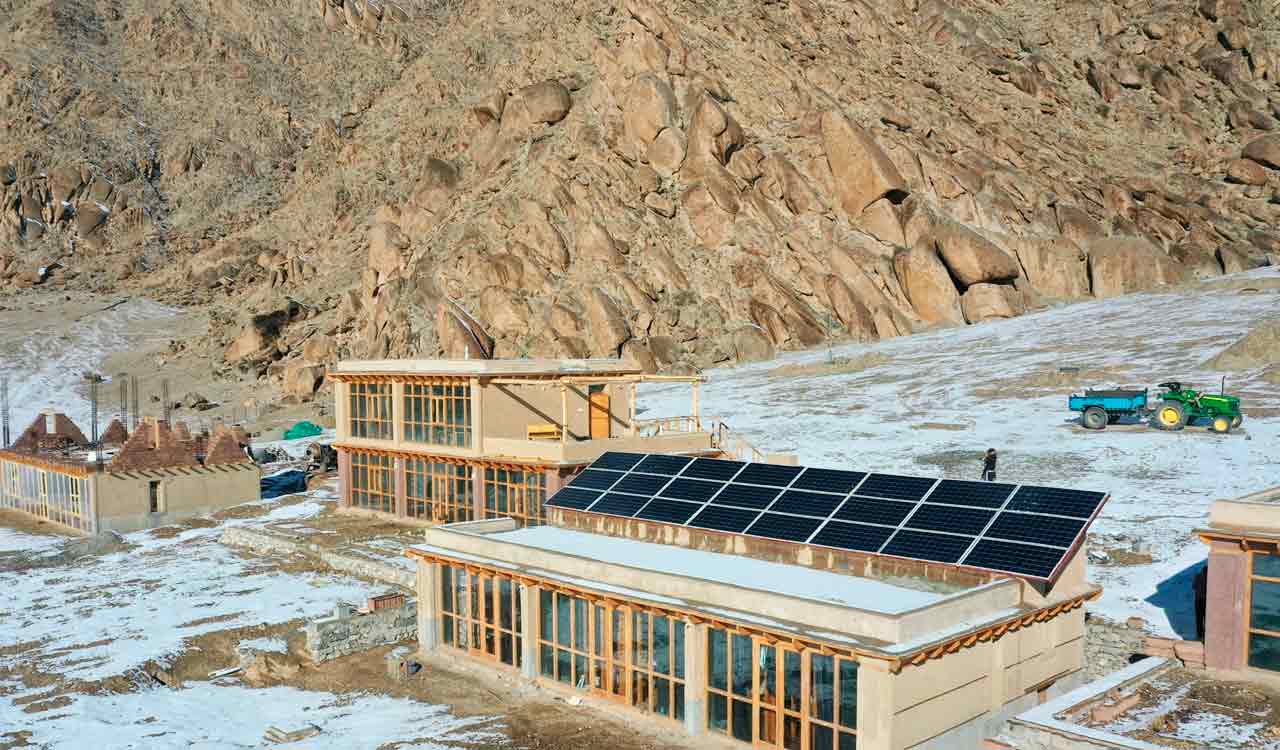Opinion: Ladakh needs a modified Sixth Schedule
A dual status as a Union Territory and strategic frontier will empower Ladakhis to manage local affairs while ensuring national control over sensitive sectors

By Brig Advitya Madan (retd)
When Ladakh became a separate Union Territory on 31 October 2019 under the Jammu and Kashmir Reorganisation Act, the move was hailed as long overdue recognition of its distinct cultural identity and strategic value. For the first time, Ladakh stood apart — no longer tethered to Jammu & Kashmir, but directly under the union government’s watch.
Also Read
Yet five years later, the region finds itself politically unsettled. What began as optimism has turned into agitation. The transformation reflects both Ladakh’s aspirations for genuine self-rule and the Centre’s need to preserve national interests in a sensitive frontier.
A Region of Contrasts
Ladakh’s complexity is layered — geographic, cultural, and strategic. It comprises two distinct districts: Leh, dominated by the Buddhist-majority Leh Apex Body (LAB), and Kargil, led by the Muslim-majority Kargil Democratic Alliance (KDA). Both groups now converge on one demand: constitutional safeguards that protect Ladakh’s people, ecology, and identity.
The Ladakh Autonomous Hill Development Councils (LAHDCs), created under the 1997 Act, were once seen as a model for grassroots democracy. But after Ladakh lost its representation in the Jammu & Kashmir Assembly, the councils’ authority diminished. Today, major decisions are routed through New Delhi, leaving local leaders feeling sidelined.
This perceived disempowerment has fuelled calls to include Ladakh under the Sixth Schedule of the Constitution — currently reserved for tribal regions in the Northeast. Such inclusion would be unprecedented for a union Territory, but to many Ladakhis, it represents the only durable safeguard against demographic and ecological erosion.
Case for Sixth Schedule
For Ladakh’s leadership, the Sixth Schedule is not an administrative preference but an existential demand. The region’s small, predominantly tribal population and fragile ecology make it vulnerable to migration and overdevelopment.
The Sixth Schedule would grant local councils constitutional authority over crucial domains:
• Land and resource use, preventing outsider acquisition of tribal land.
• Forests, water, and pastures, vital for sustaining traditional livelihoods.
• Cultural and religious institutions, including monasteries and heritage sites.
• Language, customs, and village governance, preserving Ladakh’s civilisational identity.
It would also empower councils to levy local taxes and manage welfare programmes, reducing bureaucratic dependence on Delhi. For many Ladakhis, such autonomy would not weaken the Union; it would strengthen loyalty by anchoring governance in local realities.
The Centre’s Concerns
New Delhi’s hesitation stems from strategic centrality. The region borders both China and Pakistan, and since the 2020 Galwan clashes, the Line of Actual Control (LAC) has seen heavy military build-up. The Border Roads Organisation (BRO) and Indian Armed Forces have invested massively in new roads, bridges, tunnels, and airstrips to secure the frontier.
Ceding full control over land and resources to local bodies, the Centre fears, could complicate these efforts. Defence projects often require rapid land acquisition and minimal procedural delay. A strong local veto could slow progress or expose strategic plans.
Moreover, Ladakh’s limited revenue base makes direct central funding essential. The Centre argues that retaining control over key sectors — energy, minerals, infrastructure — is necessary to ensure balanced growth and security integration. The challenge is thus to balance local empowerment with national oversight.
Steps Forward, But Not Enough
In May 2025, the Centre introduced several measures to address key grievances: 95 per cent reservation in government jobs for locals, 15-year domicile rule for residents, 33 per cent reservation for women in Hill Councils, and recognition of four local languages — Bhoti, Purgi, Balti, and Shina.
These reforms acknowledge Ladakh’s cultural uniqueness, but they remain administrative, not constitutional. Many residents fear they could be altered by executive order. The detention of climate activist Sonam Wangchuk under the National Security Act after protests in Leh has deepened mistrust and symbolised the growing disconnect between Delhi and Ladakh’s civil society.
A Calibrated Sixth Schedule
A pragmatic solution lies in a modified Sixth Schedule model, tailored for Ladakh’s dual status as a Union Territory and a strategic frontier. This hybrid approach could divide powers clearly:
• Local Councils: Control over land use, water management, environment, agriculture, monasteries, and culture.
• Central Government: Authority over defence, border infrastructure, mineral extraction, and major energy projects.
Such a framework would let Ladakhis govern daily affairs while preserving national command over sensitive sectors. Strengthening the LAHDCs with genuine legislative and financial powers could make them meaningful instruments of self-governance.
Regular consultative mechanisms between the Centre, LAB, and KDA would institutionalise dialogue, reducing the sense of exclusion that fuels unrest.
The Geopolitical Imperative
Delaying resolution carries strategic risks. Both Pakistan’s ISI and China’s United Front Work Department have historically exploited disaffection in the Himalayan borderlands through propaganda and soft influence. A politically alienated Ladakh could become a vulnerability in India’s security calculus.
Equally, the region’s environmental fragility demands thoughtful governance. Recent studies by Indian geologists have shown alarming glacial retreat in the Zanskar Valley, heightening the risk of floods and water stress. Overzealous construction without local consultation could accelerate ecological collapse, undermining both development and defence. Hence, the solution must combine constitutional creativity with ecological prudence.
Negotiation, Not Coercion
Dialogue — not directives — must guide Delhi’s engagement with Ladakh. The government must recognise that the demand for autonomy is not separatism but a quest for dignity and security. A sincere consultation process involving the LAB, KDA, religious bodies, women’s groups, and youth representatives could rebuild trust.
The Centre can also consider time-bound reviews of devolved powers—ensuring that local autonomy evolves within a national security framework. The goal should be empowerment without fragmentation.
Ladakh stands at a critical juncture. One road leads to alienation — a cycle of protests, curfews, and mistrust. The other leads to a negotiated settlement that reconciles local identity with national strategy.
The region’s significance goes beyond geography. Ladakh is both India’s spiritual high ground and strategic rampart. Its stability is vital to the nation’s Himalayan frontier and to the morale of its people. Empowering Ladakh within a secure constitutional framework would strengthen the Union, not weaken it. The challenge is not whether to trust Ladakh’s people — but how soon.
If Delhi acts with sensitivity, speed, and statesmanship, Ladakh can become a model of inclusive governance — one that harmonises development with ecology, autonomy with sovereignty. Time is of the essence. The mountains wait, but the people should not have to.

(The author is a retired Army officer)
Related News
-
Sports briefs: Shivani settles for silver in 100m backstroke swimming event
12 mins ago -
Anirudh’s all-round show seals victory for Pallavi Model School in HCA Inter-schools
14 mins ago -
Harshith wins title in Brilliant Trophy juniors online chess tournament
15 mins ago -
Jane Austen’s 250th birth anniversary celebrated at Satavahana University
24 mins ago -
Telangana HC pulls up discom over inaction on GITAM’s Rs 118-cr power arrears
47 mins ago -
Telangana High Court hears pleas challenging GHMC delimitation exercise
1 hour ago -
Political rivalry and political influence angle emerges in the lock-up death of Karle Rajesh
1 hour ago -
YSRCP chief demands CBI probe into Joji Nagar demolition in Vijayawada
2 hours ago




